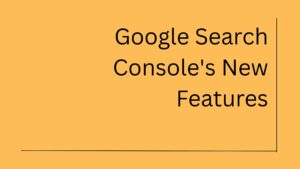Look around. Everyone’s on their phone. Scrolling, tapping, watching, reading constantly connected. And in that reality, if your brand isn’t showing up where people are spending their time… it’s pretty much invisible.
That’s the world we’re in now.
In 2024 alone, there were an estimated 324.15 million internet users in the United States. This represents a significant portion of the population, with internet penetration reaching 97.1%. The average person spends around 7 hours a day glued to their screen. Whether it’s a quick Google search, a rabbit hole of YouTube videos, or an endless scroll through Instagram, attention is firmly online.
So, it only makes sense that businesses, small and big, are showing up there too. That’s exactly what digital marketing helps with. And beyond visibility, it offers something traditional marketing never could: real-time tracking, precision targeting, and often, a much better bang for your buck.
Let’s break it down.
Top Reasons Why Digital Marketing is Important for Your Business
Everyone Gets a Fair Shot, Small Businesses Included
One of the biggest myths about marketing is that you need a massive budget to compete.
Digital marketing flips that idea on its head.
Whether you’re a solo entrepreneur, a startup, or a mid-sized local brand, digital marketing gives you access to the same platforms that big names use: Google, Facebook, Instagram, email, and SEO. There’s no paywall that blocks smaller players. You just need to know how to use the tools correctly.
It levels the playing field. No giant ad budgets required.
Of course, larger companies may spend more, but if your targeting is sharp and your content speaks to the right people, you can still win their attention. That’s something traditional channels(say, ATL marketing) like TV or print never really offered.
Here’s what makes this even more powerful: digital platforms use algorithms that prioritize engagement over budget size. A small bakery’s Instagram post can go viral if it resonates with people, while a Fortune 500 company’s bland content gets ignored. The secret sauce isn’t money, it’s understanding your audience and creating content that genuinely connects.
This democratization of marketing means creativity and authenticity often trump deep pockets. Smart targeting beats big spending every single time. Your local business can compete with national brands simply by being more relevant to your specific community. That’s revolutionary, and it’s happening right now across every industry.
Digital Marketing Costs Less. Really.
Let’s face it: marketing costs can spiral quickly.
But digital marketing? It tends to be much more forgiving.
Running a paid Google ad or boosting a post on Instagram is usually a fraction of what a newspaper ad or TV slot would cost. And more importantly, you can see exactly where your money goes.
That’s the key part. It’s not just cheaper. It’s trackable.
You know what works, what doesn’t, and what to stop pouring money into. You’re not just throwing a message into the void and hoping someone hears it. You’re adjusting in real time and learning as you go.
Think about traditional advertising: you might spend $5000 on a newspaper ad and have no clue if anyone even noticed it. With digital, you can start with $500 and see immediate results, clicks, views, engagement, and conversions. You can pause campaigns that aren’t working, double down on what’s performing, and adjust your message based on actual data.
Plus, you only pay when someone takes action like clicking your ad or watching your video. No waste, no guesswork. This efficiency means even bootstrapped startups can compete effectively. You’re not locked into expensive long-term contracts or minimum spends that drain your budget before you see results.
It’s Built to Drive Actual Sales Conversions
Impressions are nice. But conversions? That’s the real win.
And digital marketing is wired to make that happen.
Whether you’re running PPC campaigns or pushing traffic through social media, you can guide users through a funnel from awareness to interest to action. That might be a product purchase, a newsletter sign-up, or a simple phone call.
The path is clear. The tools, landing pages, call-to-action buttons, and retargeting ads are right there. You just need to piece them together in a way that makes sense for your audience.
Conversions don’t always mean sales either. Sometimes, just getting someone to remember your name is a win. Digital makes that part easier.
Every digital touchpoint can be optimized for action. Your social media posts can include shopping links. Your email newsletters, which may be part of your email marketing, can drive traffic to specific product pages. Your search ads can connect directly to booking forms or contact pages. This seamless integration means you’re not just building awareness, you’re building a systematic path to revenue.
Traditional marketing often stops at exposure, leaving a massive gap between seeing your ad and actually buying from you. Digital marketing bridges that gap with strategic follow-up sequences, retargeting campaigns, and personalized experiences that nurture prospects until they’re ready to convert. It’s marketing with a clear endgame.
Better Digital Marketing Strategy, Better Revenue
It’s not magic. But it’s close.
The more targeted your message, the higher your chance of engaging the right people. And when you engage the right people, revenue tends to follow.
Digital marketing opens up those opportunities. Especially when your strategy is working across platforms like content, email, search, and social. When it all connects, your customer journey feels smoother, less forced, more intuitive.
And that increases the chances of someone actually paying you for what you offer.
Many brands report 2x to 5x returns when they double down on digital. Not every campaign hits like that, but when you find your sweet spot, things can scale quickly.
The beauty lies in compound growth. Each successful campaign teaches you more about your audience. Every piece of content builds your brand authority. Each email subscriber becomes a potential repeat customer. This creates a flywheel effect where your marketing efforts build on each other, making each subsequent campaign more effective than the last.
Digital marketing also allows for precise audience segmentation you can create different messages for different customer stages, from first-time visitors to loyal repeat buyers. This personalization dramatically improves conversion rates because people feel like you’re speaking directly to their specific needs and circumstances. When done right, digital marketing becomes a predictable revenue generator, not just an expense.
Mobile-first Approach is No Longer Optional
We’re past the point of asking, “Should I optimize for mobile?”
Now, it’s more like, “Why haven’t you already?”
Most people open your ad, website, or email on their phones. If the experience isn’t smooth, you’ve already lost them.
Digital marketing caters directly to that behavior. It lets you tailor mobile-specific campaigns from SMS updates to mobile-friendly landing pages to vertical video content that fits how people actually hold their phones.
Think of it this way: your audience lives on their phone. If your brand doesn’t show up comfortably there, you’re crashing the party without an invite.
Mobile behavior is fundamentally different from desktop behavior. People on phones want quick answers, fast loading times, and thumb-friendly navigation. They’re often multitasking, distracted, or on the move. Your mobile marketing needs to respect these realities. This means shorter content, bigger buttons, faster checkout processes, and instant gratification.
Mobile users are also more likely to make impulse purchases and share content with friends. They expect seamless experiences across apps and browsers. If your competitor’s mobile experience is better than yours, you’ll lose customers before they even consider your actual product or service. Mobile-first isn’t just about responsive design; it’s about rethinking how people interact with your brand in a mobile world.
Digital—It’s How Brands Build Trust Today
Here’s the thing: no one just sees an ad and buys instantly.
They look you up. They check your website, scroll through your socials, maybe even read a few reviews. That’s the modern customer journey.
Digital marketing helps you build that trust across multiple touchpoints.
Consistent content. Clear branding. Useful information. Real interactions. When people see a brand show up reliably with value, they start to believe in it.
Over time, trust turns into loyalty. That’s not something traditional media can manufacture. Not without spending a fortune, at least.
Modern consumers are researchers. They want to know who you are, what you stand for, and whether other people have had good experiences with you. Digital marketing lets you control this narrative by consistently showing up with valuable content, transparent communication, and authentic interactions. Your blog posts demonstrate expertise. Your social media shows personality. Your email newsletters prove reliability. Customer testimonials provide social proof.
This multi-layered approach to trust-building is impossible with traditional marketing alone. People can’t research a billboard or have a conversation with a newspaper ad. But they can engage with your digital content, ask questions in comments, and get to know your brand personality over time. Trust is the ultimate competitive advantage.
Social Proof Matters—A Lot
We trust people more than we trust ads. That’s just how we’re wired.
So when your audience sees others engaging with your content, liking, sharing, commenting, and leaving reviews, it triggers something. A little voice says, “Hey, maybe this brand is worth checking out.”
That’s the power of social proof. And digital marketing makes it easy to build.
Invite user-generated content. Share testimonials. Run influencer partnerships that feel genuine. It’s all part of the trust-building loop that turns curiosity into conversions.
Social proof works because it reduces risk. When someone sees that hundreds of people have liked your post or left positive reviews, it signals that you’re legitimate and trustworthy. This is especially crucial for newer businesses that haven’t built a reputation yet. Digital platforms amplify social proof naturally; every share, comment, and review becomes visible to potential customers.
You can also actively cultivate social proof by encouraging satisfied customers to share their experiences, showcasing user-generated content, and highlighting positive feedback prominently. The psychological impact is immediate: people feel safer choosing options that others have already validated. This herd mentality isn’t a weakness; it’s a smart survival instinct that you can leverage ethically to grow your business.
CTAs Aren’t Just Buttons—They’re Powerful Digital Nudges
A good digital campaign doesn’t just put your name out there, it gently nudges people toward an action.
That’s where calls-to-action (CTAs) come in.
Whether it’s “Buy Now,” “Sign Up,” “Talk to Us,” or even “Learn More,” CTAs are your prompts. They guide users to do something specific, at the right time. And with tools like A/B testing, you can experiment to find out what works best.
Traditional ads rarely give you this flexibility. With digital, you test, tweak, and optimize in real-time.
The psychology behind effective CTAs is fascinating. Color, placement, wording, and timing all influence whether someone clicks or scrolls past. Digital marketing lets you test these variables scientifically. Maybe “Get Started Free” outperforms “Sign Up Now” for your audience. Perhaps green buttons work better than blue ones. You can discover these insights through systematic testing rather than guessing.
CTAs also create urgency and clarity; they tell people exactly what to do next instead of leaving them wondering. Without clear direction, even interested prospects will drift away. Smart CTAs turn passive readers into active participants in your marketing funnel. They’re the bridge between interest and action, making them arguably the most important element of any digital campaign.
The Future is Connected—and Digital Marketing Gets You Ready for it
Smart homes. Voice assistants. Wearables. Cars that know your schedule.
That’s where we’re headed. And all of it? Connected to the internet.
This growing web of devices, commonly called the Internet of Things (IoT), means even more digital touchpoints. More ways for your brand to show up. And digital marketing is the only way to keep pace with that shift.
If you’re building for the future, you can’t ignore this. You need to be visible wherever your audience is connected.
Voice search is already changing how people find information. Smart speakers are becoming shopping assistants. Wearable devices track health and fitness, opening new marketing opportunities for relevant brands. Connected cars will soon display location-based ads. Augmented reality will let customers try products virtually before buying. These aren’t distant possibilities; they’re happening now.
Brands that understand digital marketing principles will adapt naturally to these new channels. Those stuck in traditional marketing mindsets will struggle to keep up. The underlying skills, audience targeting, content creation, data analysis, and conversion optimization remain the same across all digital platforms. By mastering digital marketing today, you’re preparing for whatever connected future emerges next.
People Have Already Made The Switch To Digital Space
Even if you haven’t fully embraced digital marketing yet, your customers have.
They’re searching, scrolling, researching, and comparing all online. And in many cases, they’ve already made their decision before ever speaking to your sales team.
That’s the shift. It’s already happened.
And if you’re not where they’re looking? You’re missing the moment.
Consumer behavior has fundamentally changed. People research everything online first, from restaurants to doctors to major purchases. They read reviews, compare prices, check social media, and watch videos before making decisions. By the time they contact your business, they’ve often eliminated competitors and decided what they want. This means your digital presence isn’t just about advertising, it’s about being discoverable during the research phase.
If potential customers can’t find you online, you don’t exist in their decision-making process. Your competitors who have invested in digital marketing will capture these prospects by default. This isn’t about being tech-savvy or following trends. It’s about meeting customers where they already are and how they already behave.
Tracking and measuring is simple (and powerful) in Digital Marketing
With traditional marketing, data is often fuzzy.
How many people saw your newspaper ad? Hard to say. Did that billboard bring in sales? No clue.
But with digital marketing, you know.
How many people clicked your ad
How long they stayed on your site
Where they dropped off
What they did next
This isn’t just about numbers. It’s about learning what works and improving. The more data you gather, the sharper your strategy becomes.
Data transforms marketing from guesswork into science. You can track the entire customer journey from first touchpoint to final purchase, identifying exactly which channels and messages drive results. This visibility lets you optimize continuously increasing budgets for high-performing campaigns and cutting spend on underperformers. You can also identify patterns: maybe customers who read your blog are more likely to buy premium products, or perhaps social media followers convert better on weekends.
These insights compound over time, making your marketing increasingly effective and efficient. Traditional marketing requires large sample sizes and long timeframes to gauge effectiveness. Digital marketing provides instant feedback, letting you pivot quickly when something isn’t working or double down when you find a winning formula.
It Invites Interaction—Not Just Attention
Old-school marketing talks at people.
Digital marketing starts a conversation.
Comments, shares, likes, and DMs, your audience can respond. That’s a huge shift. Suddenly, you’re not just broadcasting. You’re connecting.
This interaction builds relationships. It lets your brand feel more human. And that connection? It drives loyalty like nothing else.
Two-way communication changes everything about marketing. When customers can ask questions, share feedback, or express concerns publicly, it forces brands to be more authentic and responsive. This transparency initially feels scary, but it’s actually powerful. People trust brands that engage openly with both praise and criticism. Interactive marketing also provides invaluable market research. Customer comments reveal pain points, feature requests, and buying motivations that traditional focus groups might miss.
Plus, when you respond thoughtfully to customer interactions, other potential customers witness your customer service in action. Every public interaction becomes an opportunity to demonstrate your values and build trust with a broader audience. This community-building aspect of digital marketing creates customers who advocate for your brand organically.
You Can Act Fast When Trends Hit With Digital Approach
Some trend explodes online, maybe a meme, a topic, a viral challenge. If your brand fits, you can jump in instantly.
That’s the beauty of digital marketing. You don’t need weeks to prepare a campaign. You just need a phone, a team that understands the moment, and the freedom to move fast.
Brands that know how to ride trends build relevance. And relevance builds awareness.
It’s not about being trendy for the sake of it. It’s about being aware, responsive, and timely.
Speed is a competitive advantage in digital marketing. While traditional campaigns require months of planning and production, digital campaigns can launch in hours. This agility lets you capitalize on unexpected opportunities, breaking news related to your industry, viral moments that align with your brand, or seasonal trends that emerge suddenly.
The key is having systems and approvals in place to move quickly when opportunities arise. This doesn’t mean jumping on every trend, but rather being prepared to act when the right moment appears. Brands that master timely, relevant content often achieve massive organic reach that would cost hundreds of thousands of dollars through traditional advertising. Cultural relevance and timing can be more valuable than perfect production quality when it comes to capturing attention online.
Final thought?
Digital marketing isn’t just another “option” anymore. It’s essential.
It’s where your audience already is. It’s where your competitors are showing up. It’s where decisions are being made.
If your brand isn’t there yet, it’s not too late. But it’s time to get serious about showing up smartly, consistently, and with intent.
Because in the digital space, attention isn’t given. It’s earned.

The Chief Author and Editor at Intothecommerce. As a seasoned expert in digital marketing, I direct the site’s strategic content and ensure every piece meets the highest industry standards. My insights drive our coverage on SEO, paid media, and cutting-edge marketing technology.






2 thoughts on “Why is Digital Marketing Important for Any Business?”
Hey writer, try playing around with various other topics in marketing, which has been crushed through this tough time where many rely on automated blogging or similar; you stand out. But you choose to be different in presenting. Hit the slot soon.
Hey all,
Edwin here, so, yeah, the how, why, and what of marketing refers to a fundamental concept within the marketing mechanism, whether it be online, offline, hybrid, or a specific kind of marketing, such as guerrilla marketing. This blogger has a long way to go, which is going to let access to study resources for marketing. This reflects the growing role of human-vetted content in this AI era. It is all I can predict now.
Great work.